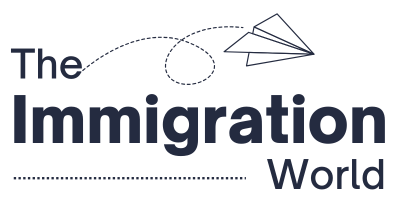Recently, Argentina has updated its work permit rules, changing how foreign workers can legally start employment. The new system impacts provisional work authorizations, onboarding timelines, and employer planning.
Previously, a simple appointment through the RADEX system allowed immediate work via a precaria certificate. Now, applicants must attend an in-person appointment and submit a full application before starting work. Understanding these changes is crucial for both employees and companies to avoid delays and ensure compliance.
Key Takeaways
Why Argentina Updated Its Work Permit Rules
Argentina’s National Immigration Directorate introduced new procedures to strengthen immigration control and verify documentation more rigorously. The government aims to ensure that foreign nationals entering the workforce are properly documented, reducing cases of informal employment and administrative errors.
These measures are part of broader efforts to align Argentina’s labor and immigration systems, protect both local and foreign workers, and maintain accurate records of employment. By enforcing stricter verification, the authorities can better monitor workforce distribution, tax compliance, and social security contributions.
In short, the update is about accountability, efficiency, and legal clarity. While it may feel like extra red tape for some, it reflects a structured approach to foreign employment, prioritizing documentation and compliance over speed.
How the RADEX System Worked Before
Before 2025, the RADEX online platform simplified work authorization for foreign employees. The process involved:
- Booking an appointment through RADEX
- Receiving a provisional residence certificate, known as a precaria, immediately upon booking
- Using the precaria to start work legally while waiting for the in-person filing
Also Read: How to Get Permanent Residency in Argentina
This system allowed foreign workers to begin employment almost immediately, minimizing delays in onboarding. Employers appreciated the flexibility, and workers could start earning without having to wait for full verification.
However, the convenience of immediate precaria issuance occasionally led to incomplete applications and administrative inconsistencies, prompting the government to revise the process.
What Has Changed in 2025
The most significant update in 2025 is that foreign workers no longer receive the precaria just by booking a RADEX appointment. Now:
- Applicants must attend the in-person appointment at the immigration office
- A complete application must be submitted, including all required documentation
- Only after this submission will the precaria be issued, granting legal permission to work
This shift means that starting work immediately after scheduling an appointment is no longer permitted. The time from booking to actual work start has therefore increased, introducing potential delays for both employees and employers.
Find Out If You Can Still Start Work on Time
We connect you with trusted immigration experts who simplify the entire process — from paperwork to approval.
How These Changes Affect Foreign Workers
For foreign nationals, the implications are practical and immediate:
- Delayed start dates: Employees must wait until the precaria is officially granted
- Extended onboarding: Companies may need to adjust training schedules and orientation
- Planning challenges: Coordinating relocation, accommodation, and work timelines becomes more critical

In numeric terms, regular applications may add seven to ten calendar days to the process, while fast-track cases see one to two extra days. For those moving internationally, even a few days can disrupt logistics, housing arrangements, and payroll.
Tips for Foreign Employees to Avoid Delays
To minimize disruptions, employees should:
- Schedule RADEX appointments as early as possible
- Prepare all required documents in advance, including contracts, IDs, and proofs of qualifications
- Confirm submission requirements with the immigration office to avoid multiple trips
- Coordinate start dates with employers to account for the waiting period
- Keep copies of all submitted documents and appointment confirmations
By following these steps, foreign workers can reduce stress, avoid violations, and ensure a smoother transition into their new role.
Advice for Employers Hiring International Staff
Employers also need to adapt recruitment and onboarding practices:
- Factor in at least one additional week for the employee’s legal start
- Ensure that all employee documents are complete before the in-person RADEX appointment
- Communicate new rules clearly to incoming staff to prevent accidental early employment
- Consider fast-track options where eligible, but still verify compliance with immigration requirements
- Adjust project timelines and workforce planning to accommodate potential delays
Proactive coordination between HR, legal, and foreign hires will help companies remain compliant while minimizing operational disruptions.
Conclusion
Argentina’s 2025 work permit updates are designed to strengthen legal oversight and protect both employees and employers. While they introduce a short waiting period before starting work, careful planning, early appointments, and complete documentation can prevent major delays. By understanding the RADEX system changes, foreign workers and companies can navigate the new rules efficiently and ensure a smooth transition into the Argentine workforce.





